NPL and The University of Manchester have signed a memorandum of understanding (MoU), committing to collaborate closely on enabling science for net zero, as well as Life Science and Health research, formalising the strategic engagement between the two organisations. The partnership recognises the critical role that the University of Manchester plays in the local economy and the wider influence it has across the region, and on national and international stages.
|
|
The collaboration between UoM and NPL looks to address many of the UK national challenges and projects. Highlights include:
NPL collaborates with the world leading researchers and state-of-the-art capability in Manchester to accelerate the commercialisation of advanced materials in the UK. This multi disciplinary research collaboration spans across the University of Manchester faculty of Science and Engineering as well as the National Graphene Institute, Graphene Engineering Innovation Centre and the Henry Royce Institute.
Researchers from the National Graphene Institute (NGI), University of Manchester and NPL have been collaborating at the frontier of quantum research for nearly two decades. One of the best known outcomes of this collaboration is the precision test of the quantum Hall effect in graphene, which has resulted in the worlds first table-top quantum resistance standard. New opportunities for collaboration are being created through the UK National Quantum Technologies Programme.
Proton Beam Therapy - Joint research between NPL and Manchester has helped to accelerate the uptake of Proton Beam Therapy. The NHS has increased support for proton therapy by sending patients abroad as a transitory solution and by committing to support two large-scale proton therapy facilities. These are sited at the Christie Hospital in Manchester, which started treating patients in 2018.
A rich heritage of collaboration has existed on the topic of Surface Engineering and Tribology. Our organisations are also working together on X-ray computed tomography (XCT) a nondestructive testing facility that can simulate real-world environments such as in the manufacturing of materials. Other emerging areas of collaboration include the Advanced Manufacturing Productivity Institute.
NPL and the National Graphene Institute (NGI) at Manchester have been working together to develop commercial graphene standards which can be used by industry to identify their own graphene properties using the same ISO standard approved measurement methods used internationally. The Nanotechnologies Technical Committee in ISO (TC229) is overseeing this and ensuring different measurement standards will apply to different forms.
Back in 2017 NPL and UoM published the NPL Good Practice Guide 145 to make distinction between the different forms of graphene, flakes (generally in a powder or liquid dispersion) and sheets on a substrate. The new ISO standard (ISO/TS 21356-1:2021) is looking at the structural properties of flakes in powders and dispersions as this is where most of the demand in industry is coming from.
Supporting industry: NPL having been working with Graphene@Manchester to provide measurement services, so industry can understand their material and use independent data to provide confidence to customers and investors. To further improve the international standards in this area, they are collaborating in joint funded R&D activity such as Isogscope.
These activities have been disseminated worldwide, for example through joint Foreign and Commonwealth grant funded missions in Asia to promote UK capability in Graphene & 2D materials. As well as through UK workshops with industry and the publication of ‘Potential of graphene and 2D materials: White Paper (2016)’. This engagement with industry enables more rapid commercialisation across the global supply chain.
Previous joint research between NPL and Manchester has helped to accelerate the uptake of Proton Beam Therapy, a radically new type of radiotherapy which benefits from fewer side effects, faster recovery and more promising outcomes for patients.
Proton Beam Therapy is not a recent idea. It was first proposed in 1946, but developments in recent years has meant it now cheaper and with emerging new accelerator technologies such as induced laser beams and dielectric wall accelerators, they can lower the cost even more.
Unlike conventional X-ray radiotherapy, protons in PBT deliver the dose just before the proton comes to rest. By modifying the energy and position of this, the dose can target the tumour more accurately and allow more dosage to target the tumour while sparing the healthy tissue surrounding it. PBT also offers the potential to treat tumours very close to critical organs, because there is no exit dose.
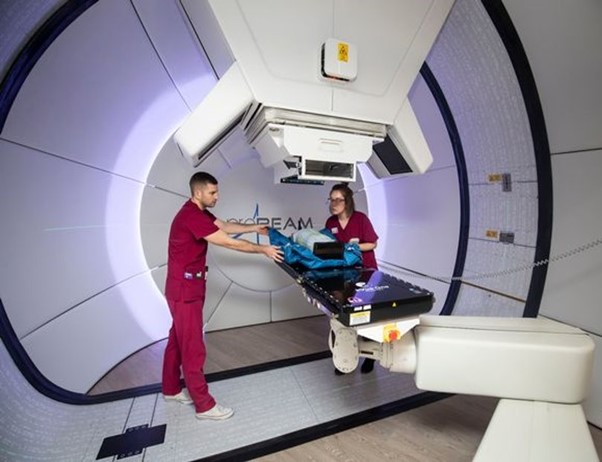
Researchers from the National Graphene Institute (NGI), University of Manchester and NPL have been collaborating at the frontier of quantum research for nearly two decades. This collaboration (including prior engagement through the NGI), has over the past decade led to the joint publication of 20 papers with over a thousand aggregate citations. One of the best known outcomes of this collaboration is the precision test of the quantum Hall effect in graphene, which has resulted in the worlds first table-top quantum resistance standard.
New opportunities for collaboration are being created through the UK National Quantum Technologies Programme.
NPL’s new scattering-type Scanning Near-field Optical Microscopy (s-SNOM) instrument will be located at UoM to take advantage of existing expertise and demand. An agreement is being developed such that the capability can be used for other equipment sharing opportunities.
Building on our long-standing collaboration and expertise in this area, both NPL and the University of Manchester are committed to creating a long-term vision to establish national centres of excellence in quantum materials which will deliver innovative research programmes and build vital metrology skills
Olga Kazakova NPL Fellow in Quantum Materials and Sensors
The Advanced Machinery and Productivity Institute (AMPI) is an initiative that will drive innovation for the UK’s advanced machinery manufacturers to meet the challenges of developing new technology and entering emerging markets. Led by an industrial consortium which includes the University of Manchester and headquartered in Rochdale, the AMP Institute will be centred around existing capabilities and research excellence across the North of England and reach across the wider UK. The 5-year, £22.6m UKRI Strength in Places Fund programme, led by NPL, is stimulating innovation and adoption of new technology through collaboration and direct support to industry.
To grow the R&D activity within the sector, new innovative and collaborative projects are encouraged and will include:
The University of Manchester is one of four academic partners involved in the Institute, others include the Universities of Salford, Huddersfield and Leeds.
AMPI aims to deliver a sustainable programme for skills and upskilling in advanced machinery, digital skills, core knowledge and understanding to support the existing and future requirements for advanced machinery and productivity.
The Henry Royce Institute secured the world's first high throughput HAXPES lab instrument installed at the University of Manchester. It uses a high-intensity liquid metal-jet gallium X-ray source to measure the chemical composition in materials from the surface into the bulk non-destructively. NPL has a strong alignment with this in helping to develop reliable measurements for lab-based HAXPES instruments to enable instrument calibration and algorithms for easier and faster data analysis.
Innovative devices, from quantum computers to nanomedicine rely upon the careful design of interfaces between materials and surface properties. Measuring the chemistry and thickness of layers at these interfaces is an important metrological challenge. Solving this challenge will help develop the next generation of electronic, electrochemical, and medical devices. NPL and the University of Manchester are developing accurate chemical analysis over depths up to ten times further than traditional approaches using hard X-ray photoelectron spectroscopy. The methods developed for quantitative analysis are being adopted by instrument manufacturers and multinational producers of advanced materials.
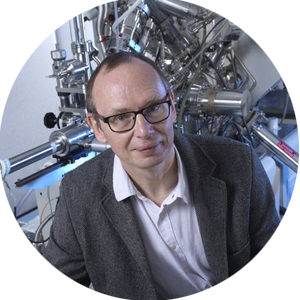
The number of HAXPES instruments around the world is rapidly increasing, as is the demand for reliable and meaningful measurements. In the near future we plan to develop the metrology for lab-based HAXPES instruments enabling instrument calibration, accurate measurements and algorithms for faster and easier data analysis.
Dr Alex Shard, NPL Fellow and Head of Science for the Chemical and Biological Science Department at NPL

Principal Research Scientist and Metrologist in Residence at the Henry Royce Institute
Andrew Pollard is currently the Metrologist in Residence at the Henry Royce Institute, an innovator of materials research helping to accelerate commercial exploration and deliver a positive economic and societal impact for the UK.
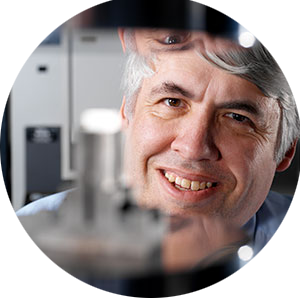
Mark Gee
Advanced Materials Characterisation
Mark visits Prof Allan Matthews (Dept of Materials) and Prof Phil Withers (Royce Institute) to realise the potential of surface engineering to benefit clean growth and sustainable use of materials through improved metrology.

Medical Radiation Physics
Andrew has an Honorary position at the University visiting the Nuclear Physics group to strengthen links with NPL, share metrology expertise and build collaborative research proposals.
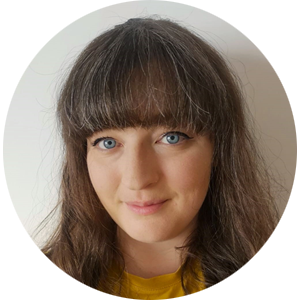
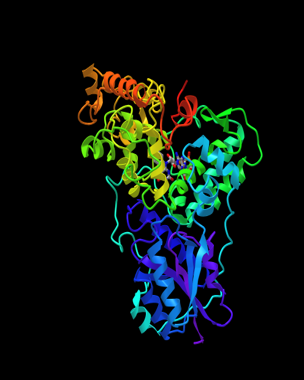 Many animals use the Earth’s geomagnetic field to navigate long distance migrations, using information like the strength and polarity of the field to let them know where they are. For many years, there has been debate over how these animals are able to do this, with multiple theories being suggested. The current widely accepted theory is that a blue-light sensitive protein called Cryptochrome is responsible for this ‘sixth sense’, via a mechanism called the Radical Pair Mechanism. This theory describes a blue light dependent mechanism, where exposure to a magnetic field will push the system to form more of an active product, leading to downstream biological effects. During my PhD, I have been studying this mechanism using the fruit fly, Drosophila melanogaster, to investigate the cellular signalling which occurs to mediate these effects.
Many animals use the Earth’s geomagnetic field to navigate long distance migrations, using information like the strength and polarity of the field to let them know where they are. For many years, there has been debate over how these animals are able to do this, with multiple theories being suggested. The current widely accepted theory is that a blue-light sensitive protein called Cryptochrome is responsible for this ‘sixth sense’, via a mechanism called the Radical Pair Mechanism. This theory describes a blue light dependent mechanism, where exposure to a magnetic field will push the system to form more of an active product, leading to downstream biological effects. During my PhD, I have been studying this mechanism using the fruit fly, Drosophila melanogaster, to investigate the cellular signalling which occurs to mediate these effects.
Anna is in the Department of Chemical and Biological Sciences at NPL


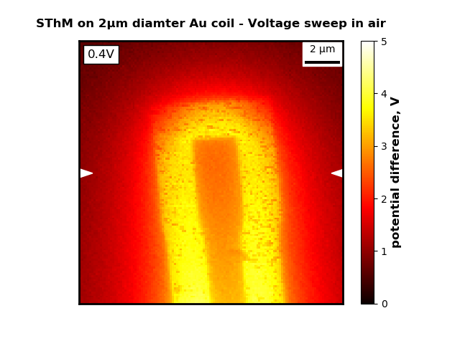 This is a joint iCase studentship project between the University of Manchester and NPL. The thermal properties of 2D materials are hard to measure quantitively. Several techniques exist which can qualitatively measure the thermal properties of nanomaterials (“Is the thermal conductivity of material A better or worse than material B”), but there are few techniques which can quantitively measure thermal properties (“what is the value of the thermal conductivity of material A compared to material B?”). A large part of the research interest in this field is driven by need to manage heat in electronic devices. I aim to contribute to this field by refining the techniques by which the thermal properties of nanomaterials can be measured and identifying novel thermal properties of nanomaterials.
This is a joint iCase studentship project between the University of Manchester and NPL. The thermal properties of 2D materials are hard to measure quantitively. Several techniques exist which can qualitatively measure the thermal properties of nanomaterials (“Is the thermal conductivity of material A better or worse than material B”), but there are few techniques which can quantitively measure thermal properties (“what is the value of the thermal conductivity of material A compared to material B?”). A large part of the research interest in this field is driven by need to manage heat in electronic devices. I aim to contribute to this field by refining the techniques by which the thermal properties of nanomaterials can be measured and identifying novel thermal properties of nanomaterials.
Chris is in the Department of Quantum Technologies at NPL
Underpinning all the research areas is a collaborative programme aligning both University of Manchester and NPL’s strategic ambitions. The aims of the programme are to:
The competition is co-ordinated by the University of Manchester’s Business Engagement team and Faculty of Science and Engineering and the Postgraduate Institute for Measurement Science (PGI). Since its launch, a number of successful projects have been established, forging strong Industry, UoM and NPL partnerships. Projects include investigating the dielectric fluids for cooled batteries, the manufacture of 3D organoids for drug discovery and technologies to improve hydrogen uptake. Industrial involvement has been secured from third parties including BP, Jacobs, Rolls Royce, Waters Corporation and Manchester Biogel.
The Eng D programme has surpassed expectations, by extending the breadth of our joint research engagements, we have established an even stronger cohort of PhDs benefitting from measurement expertise.
Prof Scott Heath Associate Dean for PostGraduate and Early Career Researchers UoM
Quantification of hard X‐ray photoelectron spectroscopy: Calculating relative sensitivity factors for 1.5‐ to 10‐keV photons in any instrument geometry
A method for rapid determination of theoretical relative sensitivity factors (RSFs) for hard X-ray photoelectron spectroscopy (HAXPES) instruments of any type and photon energy has been developed. The anticipated errors on these RSFs are less than the typical errors generated by extracting X-ray photoelectron spectroscopy (XPS) intensities from the spectra and thus enable adequate quantification for any XPS/HAXPES experiment up to 10 keV.
International interlaboratory comparison of Raman spectroscopic analysis of CVD-grown graphene
There is a pressing need for reliable, reproducible and accurate measurements of graphene’s properties, through international standards, to facilitate industrial growth. However, trustworthy and verified standards require rigorous metrological studies, determining, quantifying and reducing the sources of measurement uncertainty. Further details can be found here – add Andy's link
Tissue mimicking materials for imaging and therapy phantoms: a review
Tissue mimicking materials (TMMs), typically contained within phantoms, have been used for many decades in both imaging and therapeutic applications. This review investigates the specifications that are typically being used in development of the latest TMMs. Therapeutic applications discussed within the review include radiotherapy, thermal therapy and surgical applications.
Anomalous Low Thermal Conductivity of Atomically Thin InSe Probed by Scanning Thermal Microscopy
Here, the nanoscale thermal properties of 2D indium selenide (InSe) are studied by scanning thermal microscopy. The high electrical conductivity, broad-band optical absorption, and mechanical flexibility of 2D InSe are accompanied by an anomalous low thermal conductivity (κ). These thermal properties are critical for future emerging technologies, such as field-effect transistors that require efficient heat dissipation or thermoelectric energy conversion with low-κ, high electron mobility 2D materials, such as InSe.
A proposal on M4QN (materials for quantum network) was successful in the field of Quantum Materials. NPL are the characterisation work package leader on two Work Packages (spin and topology). It’s co-led by Manchester and Imperial College. NPL and UoM are also looking at other engagement pathways including joint research, studentships and facilities.
The standardisation of new materials is crucial if they are to be used by industry to provide a step-change in many different technological sectors. To this end, NPL and UoM are collaborating in a project funded through EMPIR, called ISO-G-SCoPe, to provide a quantification of the uncertainties in measuring graphene related 2D materials, which will form the basis of several international standards.
Teams from Manchester and NPL are exploring research interests and expertise on subjects including metabolomics, biometrology and quantitative imaging for personalised medicine. Specific areas of collaboration include data standardisation of ontologies, standards in data health records and digital phantoms.
Our research and measurement solutions support innovation and product development. We work with companies to deliver business advantage and commercial success.
Contact our Customer Services team on +44 20 8943 7070